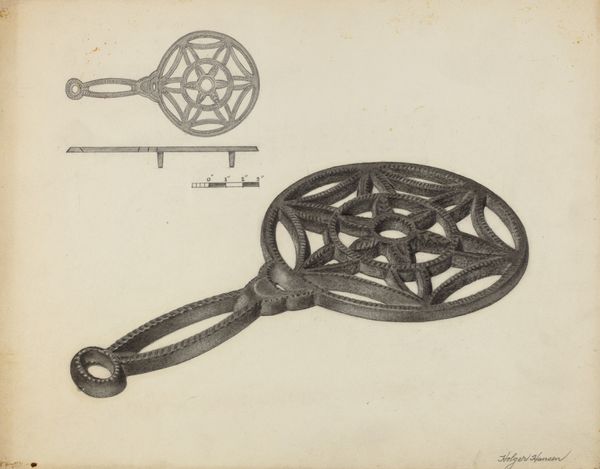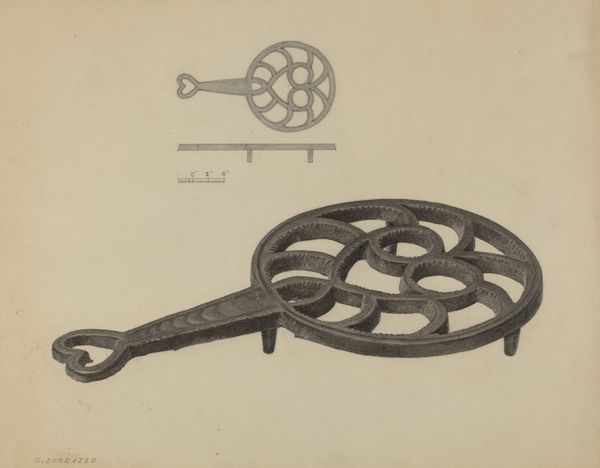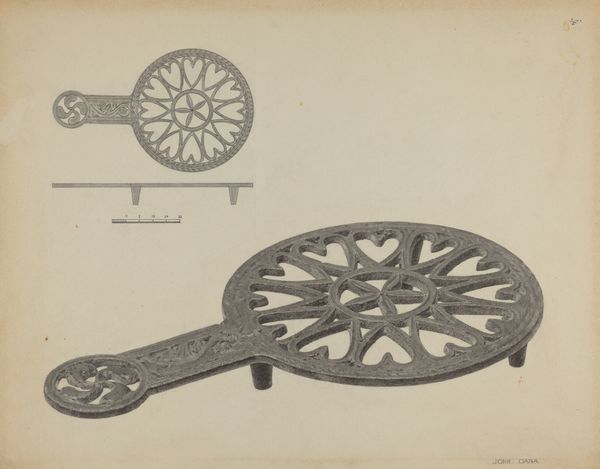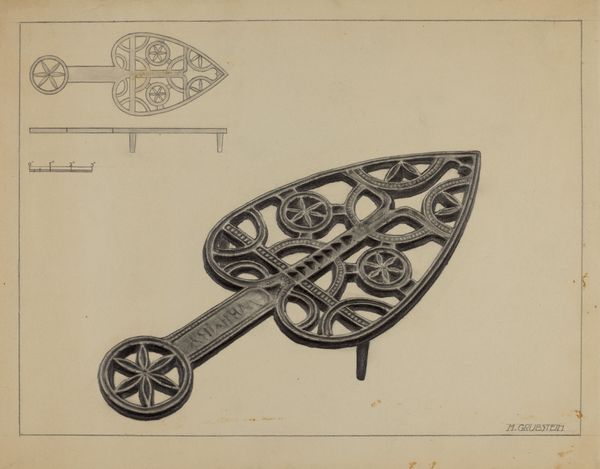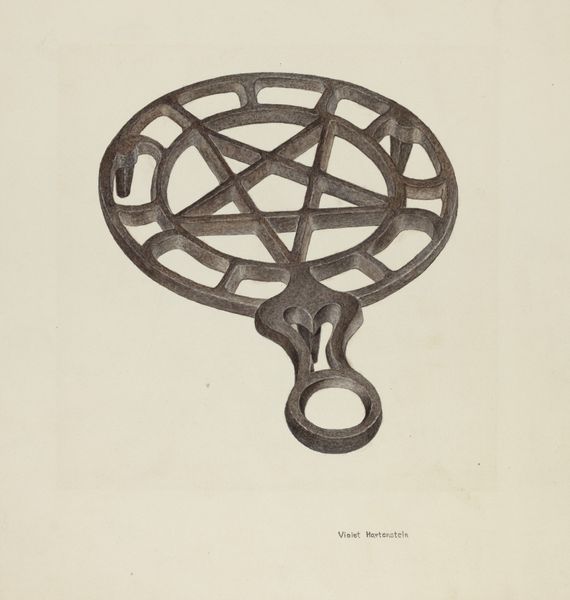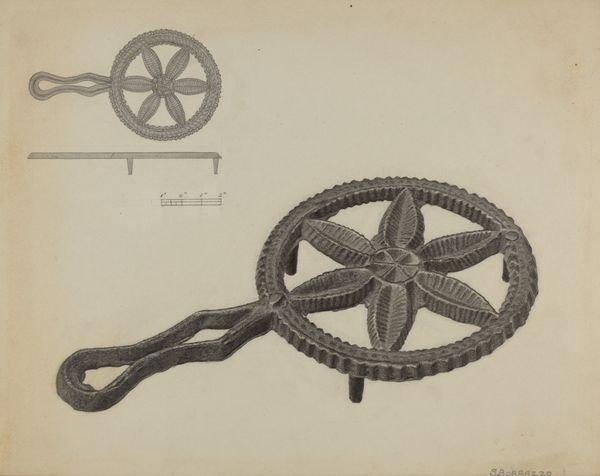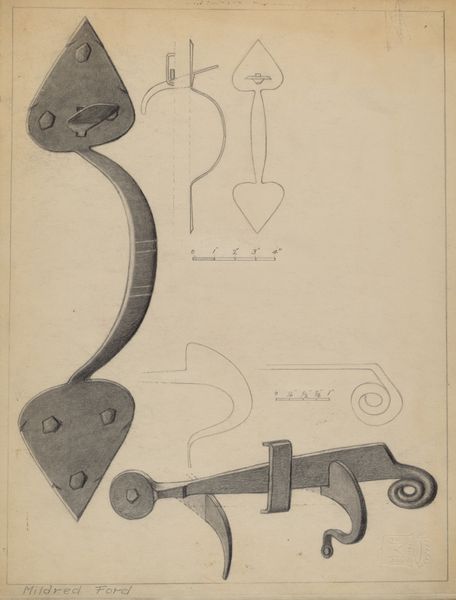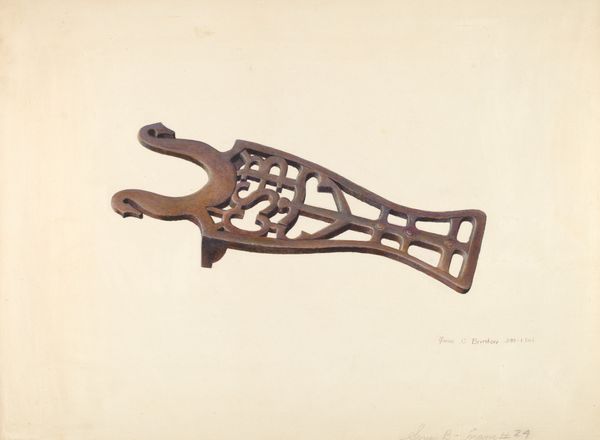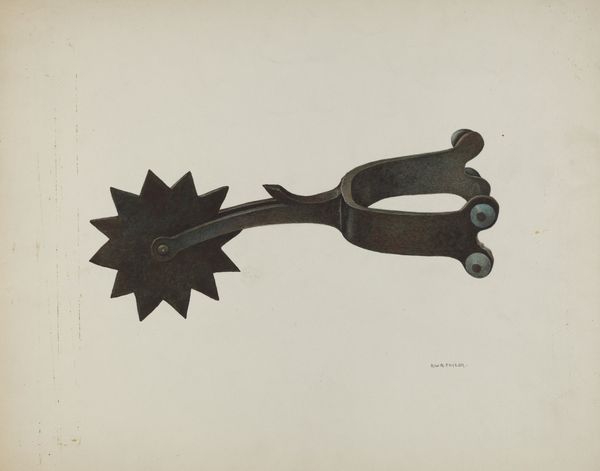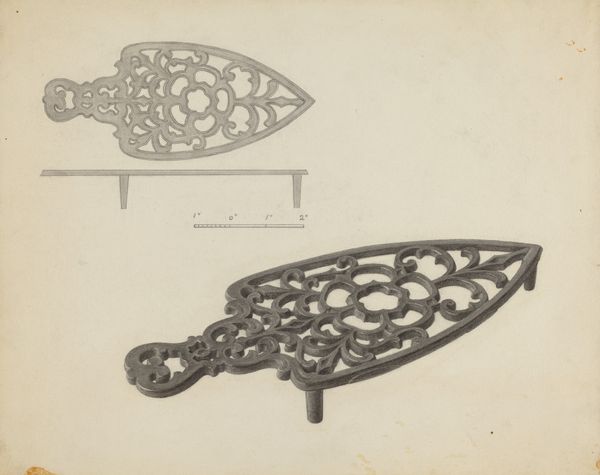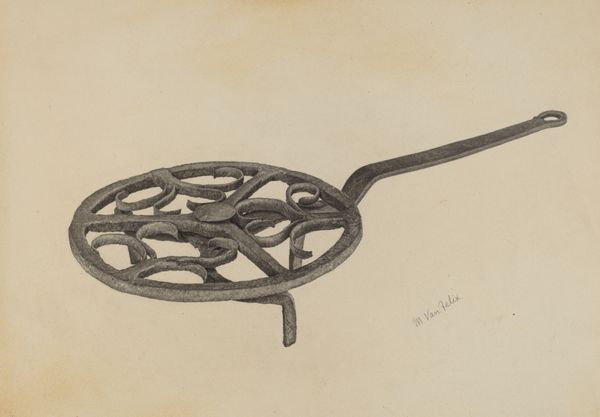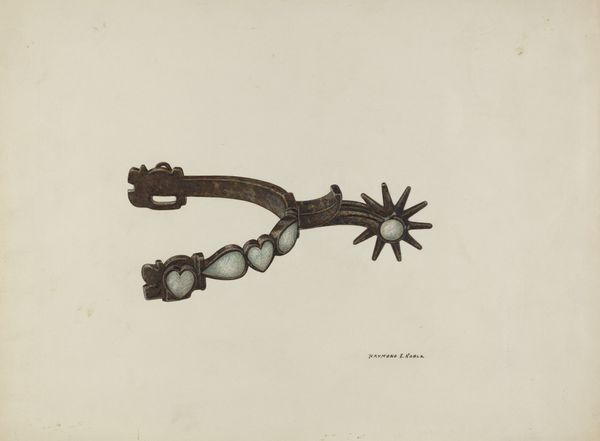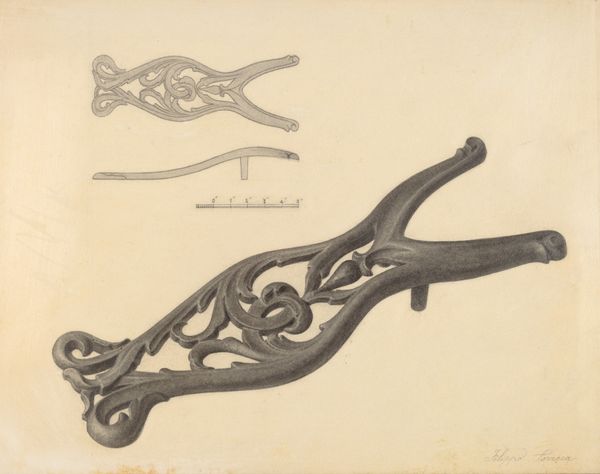
drawing, paper, pencil
#
drawing
#
paper
#
pencil
#
academic-art
Dimensions: overall: 22.3 x 28.8 cm (8 3/4 x 11 5/16 in.)
Copyright: National Gallery of Art: CC0 1.0
Editor: So, this is Filippo Porreca's "Pa. German Flat-iron Holder," from around 1938. It's a pencil drawing on paper. I find it fascinating how a mundane object like an iron holder can be rendered with such detail. What stands out to you about it? Curator: Immediately, I'm drawn to the choice of depicting this everyday object. We're invited to consider not just its form, meticulously rendered in pencil, but its function and place within a specific social and economic structure. The flat-iron holder wasn't just a tool; it speaks to labor, domestic life, and perhaps even the gendered division of work within the Pennsylvania German community. Editor: I hadn't considered the labor aspect so directly. Curator: Look at the precision of the drawing. The artist is documenting, almost archiving, a specific form of craft. The question becomes, why? What does it mean to elevate a functional, possibly mass-produced object, to the level of art through careful artistic rendering? Are we seeing an appreciation for craft traditions in the face of industrialization? Editor: That's a very interesting way to frame it, it highlights consumption and its own history in consumerism. Curator: Precisely. It also speaks to the relationship between high art and what is traditionally considered craft. By drawing a flat-iron holder, Porreca challenges those boundaries. Editor: So, you're saying the choice of subject and medium, the detailed execution, points us towards the social and material conditions surrounding the object itself? Curator: Exactly. It invites us to deconstruct how this object was made, used, and what meanings it held within its original context, while questioning the hierarchy between artistic and utilitarian practices. Editor: That gives me a completely different way to view the drawing. Curator: Indeed. It's less about aesthetics in a traditional sense and more about understanding the network of relations embedded within a simple object. Hopefully this gave a glimpse of social artistic practices. Editor: Definitely a lesson that opens eyes on this artwork. I now see the power it has and how labor it promotes can be portrayed as high end art.
Comments
No comments
Be the first to comment and join the conversation on the ultimate creative platform.
